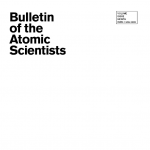Rip currents: The dangers of nuclear-armed submarine proliferation
By Andrew C. Winner, Ryan W. French | July 3, 2016
When it comes to nuclear-armed submarines, the global status quo is transforming rapidly. During the Cold War and its immediate aftermath, there was more or less a dynamic equilibrium, in which sea-based nuclear forces were limited to the navies of the United States, Russia, France, the United Kingdom, and to some degree, China. But over the past several years, new players have entered the scene – including India, Pakistan, North Korea, and Israel – which means that stability is becoming challenged while the number of weapons in the arsenals of newer nuclear powers increases. This is ironic because the principal purpose of sea-based nuclear forces, in theory, is to bolster deterrence stability by increasing the survivability of one’s arsenal. Yet these weapons, when brandished by countries locked in enduring rivalries and frozen conflicts, could just as easily provoke miscalculation and accidental war due to chance encounters between nuclear-capable submarines and opposing naval forces, lapses in human judgment, and imperfect command and control.
Together, we make the world safer.
The Bulletin elevates expert voices above the noise. But as an independent nonprofit organization, our operations depend on the support of readers like you. Help us continue to deliver quality journalism that holds leaders accountable. Your support of our work at any level is important. In return, we promise our coverage will be understandable, influential, vigilant, solution-oriented, and fair-minded. Together we can make a difference.
Issue: Bulletin of the Atomic Scientists Volume 72 Issue 4
Keywords: India, North Korea, Pakistan, Submarine proliferation, deterrence, escalation, missiles, nuclear submarines
Topics: Uncategorized















